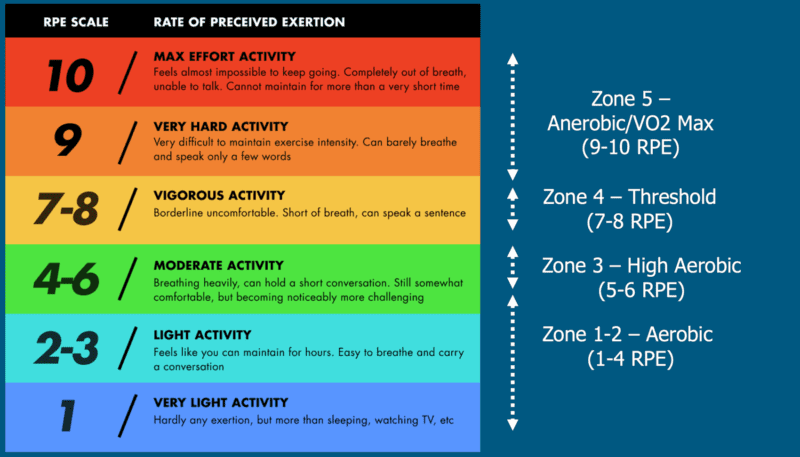Why is Hill Running so Hard? (10 Ways to Make it Easier)
How many times have you changed your running route just to avoid a hill?
Don’t worry. You are not alone. Most runners don’t like hill running.
In this article, you will find out why hill running is so hard and how to make it easier.
Why is hill running so hard?
Hill running is hard, challenging, and energy-demanding because the runner has to more strongly activate his muscles in order to overcome his own weight and gravity. The higher the slope, the more energy needs to be invested to overcome the hill.
Hills are often seen as obstacles that prevent us from achieving faster times, require extra effort to be finished, and as something that is overly difficult.
However, keep in mind that every effort pays off. This is best seen when we are training. If you train hill running, no matter how hard it is, you will become a better and more efficient runner.
Tip
Runners often overestimate their capabilities and do not adjust their running pace and effort to hilly terrain or choose too steep inclines that lead to a faster appearance of fatigue and sudden deceleration or even giving up on your workout.
It is important to listen to your body and adjust your level of effort to the terrain you are running on to progress in training and be a better runner.
On the psychological side, it can be a bit frustrating when you compare the average running pace on hilly and flat terrain.
You might feel like you’re trying really hard, while not making any progress.
But don’t bother with that, since it’s only important to monitor your training effort. The „slower“ you go uphill, the faster you will be on flat ground.
Also, hill running can be even more difficult if it is not a regular part of your training process.
Naturally, it will take a lot longer to recover from hill running as you are not used to that type of effort.
Read below on how to make hill running easier.

How can I make hill running easier?
Hill running is difficult in itself, but there are ways to make it easier.
1. Initially, choose less steep slopes
If you are a beginner or have included hill running into your training plan for the first time, choose less steep slopes.
Gradually, as your body adapts to the effort, include longer and steeper slopes.
That way, not only will you allow your body to adjust gradually, but you will also be mentally more willing to put in more effort and improve your pain tolerance threshold.
2. Warm up properly
As it is with all workouts, it is important to warm up properly before hill running.
That way, you will be better prepared for the main part of your workout.
Warming up may include light walking or running. If you can, run on flat ground during warm-up. You can also do mobility exercises, dynamic stretching exercises, and several strides.
It all depends on what type of hill running you are doing.
Tip
Adjust the warm-up length to your fitness level, weather conditions, and the type of hill running that you will be doing.
Read more: Warm-up Before Running (Ultimate Guide)

3. Pay attention to your posture
Keep your body upright, slightly tilted forward at the hips. Make sure that you don’t slouch.
Leaning too far forward reduces the range of motion of the hip flexors.
For this reason, you become unable to hit the ground properly and thus reduce your running efficiency.
4. Look straight ahead
Look straight in front of you. That way you won’t slouch and you will have a greater flow of oxygen.
Likewise, you will be able to focus on the hill ahead of you.
5. Shorten your stride
While running uphill, shorten your stride.
Do not overstride because you won’t be able to land your foot beneath you, but in front of you.
That way, you will spend more energy and you will not be effective.
Tip
Shorten your stride when you run uphill. Your stride length will naturally shorten due to gravity and increased incline.
When the slope is not as steep, readjust your stride and lengthen it. The steeper the incline is, the shorter your stride should be.
Tip
Keep in mind that the body naturally adjusts stride length to better bear with the running effort.
6. Work more intensely with your arms
When it gets difficult, concentrate on your arm swing. That way, your legs will follow the rhythm of your arms to maintain balance.
This will allow you to maintain your rhythm and beat the slope more easily.
7. Don’t bother with pace
When running uphill, track the effort, and not the running pace.
The goal is to achieve the same effort when you run downhill, uphill, or on flat ground.
If you try to maintain the pace you have while running on flat ground, you will get tired too easily and you won’t be able to finish the set workout.
Example
If you are doing hill repeats, according to the rated perceived exertion scale (RPE scale), the effort level is 8-9, which means very heavy effort and high intensity. Meanwhile, continuous hill running is done at a slightly lower intensity. According to the RPE scale, the effort level is 6-7.

8. Ensure adequate food and fluid intake
Hill running is quite demanding and it is important to ingest adequate amounts of food to have enough energy.
When you run uphill, you work against gravity, using your body weight as resistance.
Due to the increased effort, more energy is required.
The more energy you invest, the more calories you will burn.
Tip
If you go hill running over a greater distance, make sure to bring an energy gel or chocolate bar.
While it is important to eat before hill running, it is also important to make sure that you don’t eat too much and lower the training efficiency.
Read more: Can I Run on a Full Stomach? (Explained in Detail)

9. Be consistent
As with everything, consistency is important when it comes to hill running.
In the beginning, a hill will present a great effort to you, either physically or mentally.
However, with time and a gradual increase in exertion, your body will adapt to the required effort and you will be able to overcome hills much more easily.
Be patient, enjoy the training, make sure that you rest, and results will come.
Tip
Over time, regular hill repeats will increase your pain threshold and you will be able to endure much more discomfort. This will make it much easier for you to run uphill.
10. Distract your thoughts from discomfort
Don’t think about how hard it is for you, but rather focus your thoughts on something you can control.
To make hill running easier, try to focus on your running technique, breathing, stride, and arm swing.
Read more: How to Run Hill Repeats? (4 Amazing Hill Running Workouts)
Tip
Set yourself small goals. For example, run to a certain tree. That way, you will not think about how difficult it is, but how to reach the goal. Furthermore, use visualization and remember that each uphill has its downhill.

Does running uphill get easier?
Of course, over time, hill running will become easier.
Your endurance and fitness level will increase and you will have a higher pain tolerance threshold, which will help you beat the hill more easily.
Tip
Regular hill running will improve your aerobic and anaerobic performance, which is especially important to middle- and long-distance runners. After a while, you will be surprised how much easier it will be for you to run, not only uphill but also on flat ground.
If you want to know more about hill training, read the article Hill Training (8 Best Hill Running Workouts).

Matea Matošević
Hi, I’m Matea! I’m an Olympic Marathon Runner, founder, and writer behind OLYRUN.com. On this site, I provide help in the form of my knowledge and experience to all who love running and active living. Read more…

